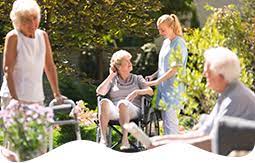Feeling part of a community isn’t a luxury—it’s a right. For people living with disability, genuine community participation can unlock a sense of belonging, purpose, and joy. Yet without structured opportunities, this inclusion doesn’t always happen on its own. That’s where ndis social groups play a vital role.
These group programs support people to connect with others, try new things, and build everyday skills in fun, social environments. They aren’t just activities—they’re bridges to inclusion.
What Is Community Participation and Why Does It Matter?
Community participation is about actively engaging in social life—whether that’s joining a local group, learning a skill with peers, or simply enjoying time together outside the home. It goes hand in hand with social inclusion: the idea that everyone should have opportunities to take part, regardless of ability.
For people with disability, barriers like transport, confidence, or a lack of accessible spaces can limit involvement. Structured supports through the NDIS are designed to change that.
Funded under Core Supports or Capacity Building, programs like ndis social groups make it easier for participants to find meaningful, safe, and enjoyable ways to take part in their communities.
What Do Inclusive Social Groups Look Like?
The beauty of NDIS-funded group programs is that they’re diverse. There’s no single mould—activities are shaped around interests, age groups, and life goals. What unites them is their focus on connection.
Examples of inclusive group programs include:
Creative Art Classes
These sessions bring people together to paint, draw, sculpt or craft. They’re great for expression and social interaction, especially for those who find verbal communication difficult.
Sports and Recreation
Whether it’s indoor basketball, walking groups, or swimming, these activities promote physical health and teamwork in relaxed, social environments.
Cooking and Life Skills
From learning to cook a meal to grocery shopping and budgeting, these group sessions are equal parts practical and social.
Community Outings
Group trips to the zoo, movies, beach, or local markets help participants get comfortable in public spaces and build real-world confidence.
You can explore a full list of options by checking current ndis social groups and filtering by location or activity type.
How to Facilitate Inclusion Through Group Programs
Facilitating community participation isn’t just about scheduling activities—it’s about shaping experiences that are welcoming, empowering, and accessible. Here are practical ways providers and coordinators can encourage inclusion:
1. Start with Interests
People are more likely to join and stay engaged in a group if the activity speaks to their passions or goals. Whether it’s gardening, music, or board games, let the participant’s interests guide the options.
2. Offer Predictable Structure
Clear, consistent routines help participants feel safe and confident. Knowing what to expect in each session reduces anxiety and builds trust.
3. Support at the Right Level
Facilitators should be trained to support varying needs—whether that’s communication assistance, sensory-friendly modifications, or step-by-step coaching.
4. Encourage Peer Connection
Small prompts like name games, team tasks, or shared roles help people get to know each other naturally. The goal is to build relationships, not just run through an activity list.
5. Make Spaces Physically and Emotionally Safe
Accessibility matters—so do atmosphere and tone. Inclusive spaces are respectful, kind, and adaptable, where everyone’s contribution is valued.
Inclusive design isn’t about doing more—it’s about doing what works for everyone.
The Ripple Effect: Why Inclusion Makes a Difference
Facilitating group participation has benefits far beyond the sessions themselves. Research from NDIS Quality and Safeguards Commission shows that connection and meaningful activity can significantly improve quality of life for participants.
Common outcomes include:
- Greater confidence – trying new things and succeeding with peer support
- Reduced loneliness – weekly connections help build routines and friendships
- Stronger communication – both verbal and non-verbal skills improve
- Increased independence – many participants take on new responsibilities over time
These programs also support families and carers by providing reliable, enriching opportunities that contribute to the participant’s NDIS goals.
Who Can Join NDIS Social Groups?
Any NDIS participant with relevant funding can access social group programs. The most common budget areas are:
- Core Supports – for everyday participation and access to community
- Capacity Building – Increased Social and Community Participation – for skill development and goal-focused learning
Programs are available for children, teens, adults and older Australians. Support coordinators can help participants find suitable programs and request adjustments where needed.
If you or someone you support is ready to get involved, check out the options through ndis social groups and enquire directly with the provider.
Final Thoughts
Facilitating community participation and social inclusion doesn’t require grand gestures. Often, it’s the small things—laughing during a group game, sharing a snack after cooking, or learning to catch the train with a friend—that make all the difference.
Ndis social groups offer safe, structured opportunities to be seen, heard, and involved. And in doing so, they’re helping build a more inclusive Australia—one connection at a time.

